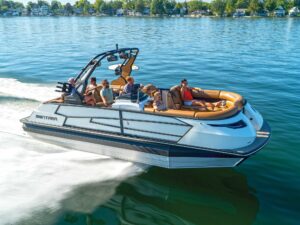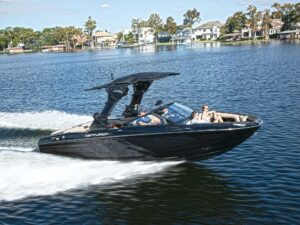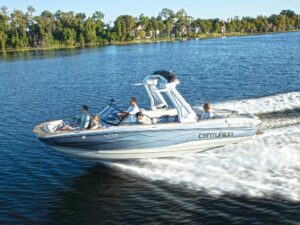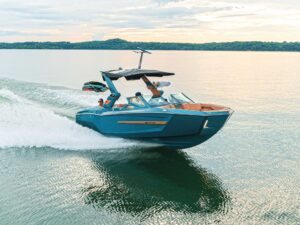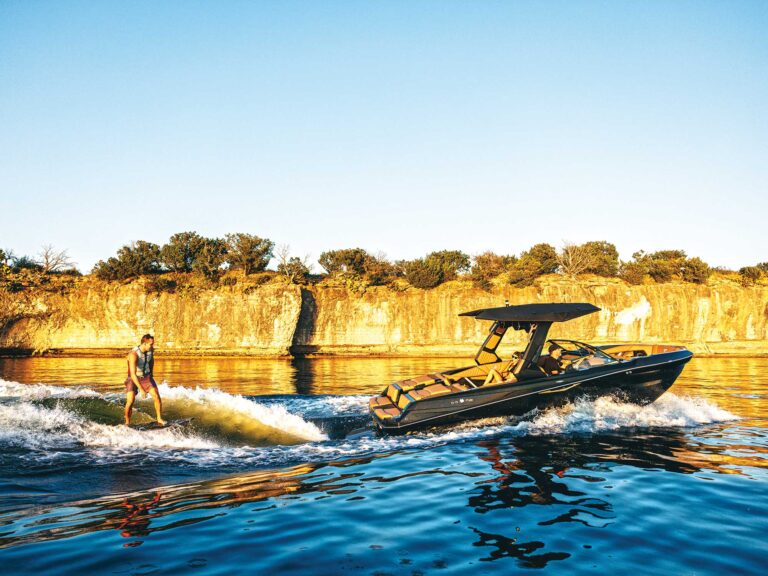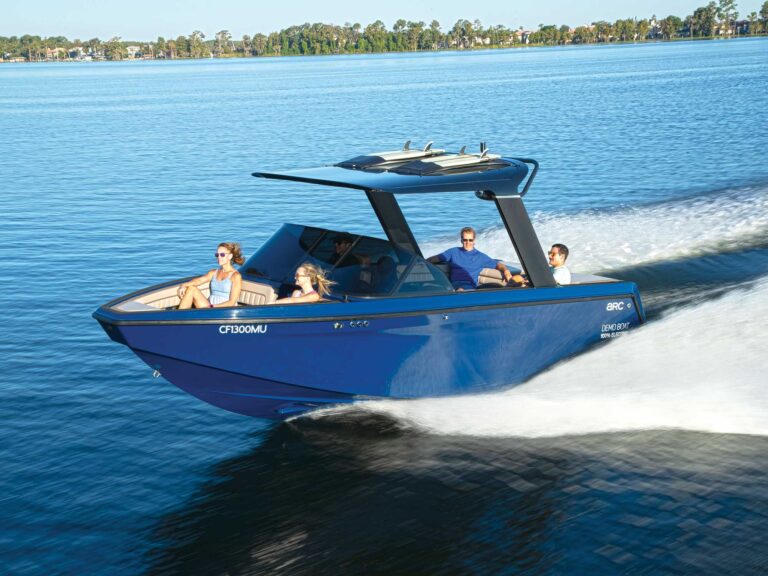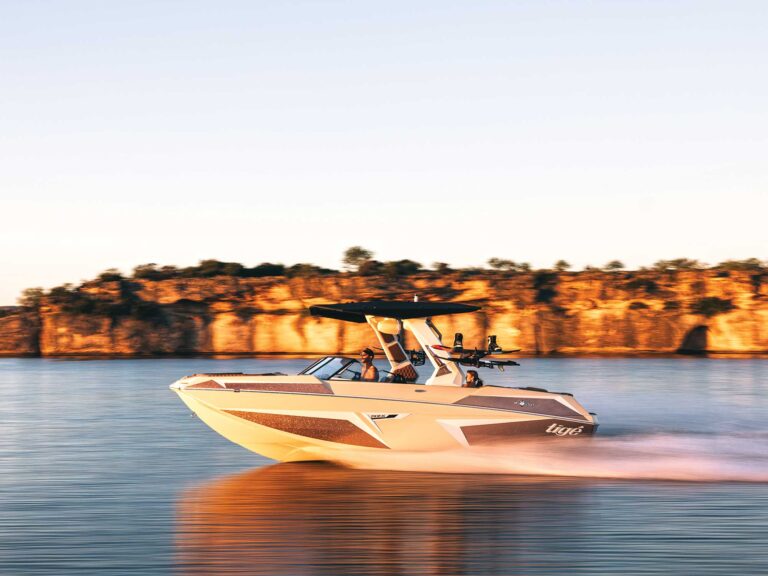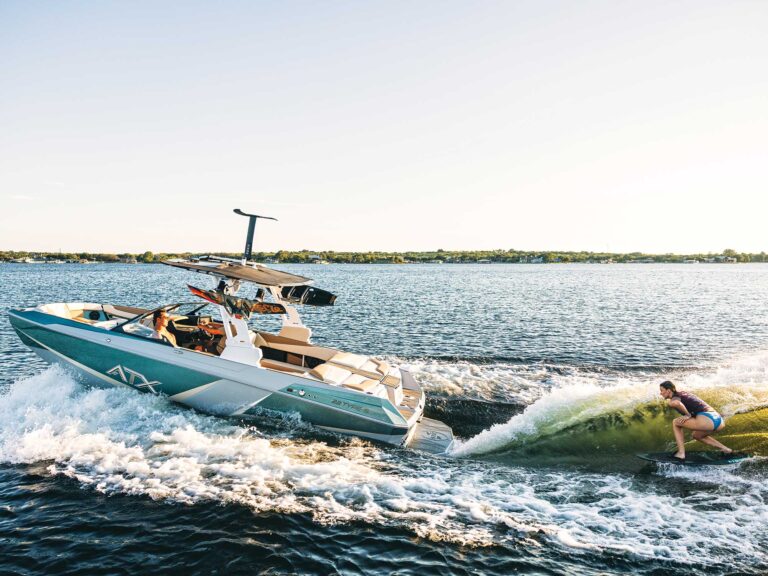
At the launch ramp or around the campfire, boater talk often turns to troubles—and topping the discussion, along with outboards and tow vehicles, is the boat trailer. It seems like everyone has a story about “that time my trailer wouldn’t…” So, in keeping with that theme, here are 10 potential problems on your boat trailer and how you can prevent them.

Trailer Lights
Commonly first or second on the list next to wheel bearings, trailer lights fail often due to the harsh environment they live in and, of course, lack of maintenance. Thanks to LED lighting, however, system problems have dropped dramatically. LEDs can take a lot more punishment than old-school incandescent lights, plus they’re a lot brighter. They last longer as well. If you’re having light problems, it may be time to simply upgrade your trailer to LEDs. Typical light-system problems include:
Flickering: If all the lights flicker, this usually comes from an intermittent ground. If your trailer ground (white) wire is not connected, and you’re using the ball coupler as the ground, this is usually the result. Connect that white wire to a solid ground on the trailer tongue, for instance, by drilling a hole and using a screw as a post for a ring terminal. (This is in addition to a ground for the pigtail on the vehicle.) If only one light (or only one side of the trailer) flickers, check the ground(s) on those individual lights. If you have incandescent lights, remove the lens, and ensure the bulb is not damaged and is making its connection to its mounting base solidly.
No turn signal/brake light: Check the ground or the power wire for the problem light (green on the right side, yellow on the left). Again, if you have incandescent lights, remove the lens, and ensure the bulb is not damaged and is making its connection to its mounting base solidly.
No running lights: Check the ground or the power wire (brown) for the running lights. For incandescent lights—yes, you guessed it—see above.
Damaged pigtail (connection to car socket): This usually happens when someone runs over the harness. Fortunately, they’re cheap and easy to replace.
Damaged light mount: Backed into something? You may need a welder, or at least a new light bracket. Don’t forget the license-plate bracket.

Bunks
Oh, man—you come back from the ramp, and there’s a metal bunk stanchion/support scraping the hull. Guess those old wooden bunks needed replacement, eh? Here’s what to do.
Measure the bunks, and purchase replacement wood and carpet (or new plastic bunk slicks). Don’t forget the mounting bolts, nuts and washers—stainless is best.
Offload the boat and store it. This may be harder than it sounds, particularly if your rig is larger and/or you don’t have an easy way to do this. You may have to dump it off on your lawn, or pick a slow day at the ramp and leave it docked while you replace the bunks in the parking lot.
If you’re going the traditional way (wood and carpet), use white pine or redwood and stainless-steel or monel staples. Consider mounting the bunks on end rather than flat—the wood is more rigid that way and will provide even better hull support.

Rollers
Rollers get deformed and won’t turn, and the shafts get rusty. Fortunately, rollers are easy to replace. What to do:
- Measure, especially shafts. They’re available in many sizes, and you’ll need to ensure they stick out far enough on each side of the roller to get the retainer caps on.
- Consider replacing with poly rollers instead of the black rubber ones. Poly is more expensive by far, but it’ll last longer and won’t mar your hull with black streaks.
- Don’t forget the bow roller/bow stop. This part takes a lot of abuse, so it should be replaced.
- End caps are important, especially for the rearmost roller, when loading in the wind. They help keep your hull from damage when centering on the trailer.

Tongue Jack
For the most part, today’s tongue jacks are inexpensive, disposable items. You can buy a swiveling, galvanized 1,200-pound-capacity tongue jack for less than $30 at most discount stores. Trouble is, the price reflects the durability and longevity; if you’re not careful, you’ll be replacing that jack inside a couple of years. Here’s how to make yours last a bit longer:
• When you use it to move your boat around the driveway, lower the jack almost all the way down. Moving it with the leg extended (at its weakest point) will cause premature failure.
• Keep the pivot point, dolly wheel and crank handle/mechanism well-lubricated.
• Touch up rusty spots with cold galvanizing spray to keep corrosion to a minimum.
• When storing, don’t use the jack to support the trailer tongue; this will cause the plastic wheel to eventually flatten. Instead, use another support, taking the weight of the trailer off the jack.

Trailer Brakes
Brake problems often stem from poor maintenance. Most boat trailers employ surge brakes. Here are some common issues.
Low or no fluid: If the surge-brake actuator reservoir is low or empty, you’ll need to fill it properly, then bleed the brakes again. If the seals are leaking, you’ll need to rebuild the actuator or buy a replacement.
Corroded or nonworking coupler actuator: Replace the actuator if the current one hasn’t been maintained.
Crimped or damaged brake lines: Find the problem and repair the line. (You’ll need to add fluid and bleed the system again.)
Corroded brake-actuator mechanisms: Do a complete system overhaul. Start with new brake assemblies for each wheel.
Worn brake shoes or worn brake pads: You may need to replace them and also replace the drums or rotors.
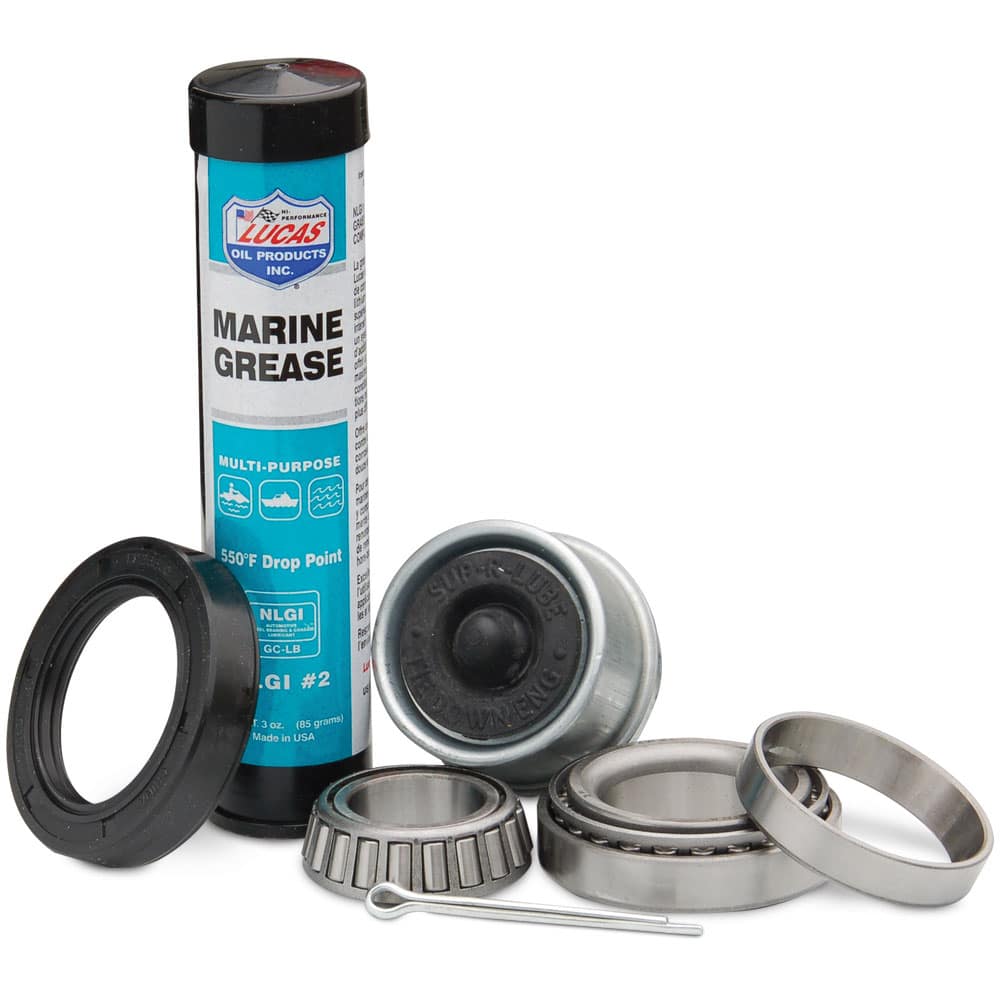
Wheel Bearings
Next to trailer lights, wheel bearings seem like the most often reported problem among trailer boaters. If you’re towing down the road and experience bearing failure, it’s often too late. If you catch it in time, you might be able to field-fix the issue, if you’ve planned ahead and carried parts and tools. (An extra hub complete with bearings and grease is a great savior.) Before a long trip, make it a habit—part of your pre-trip checklist—to check the bearings, and repack or replace them if necessary, before you head out.
To avoid the problem in the first place, take a short test ride. Check the hub temperature at every gas and rest stop; feel the hubs on the inside and out for excessive warmth. If a hub gets hot, pull over as far as possible, raise the problem wheel, and remove the wheel and tire. Removing the hub will show the bad bearing. If the axle isn’t damaged, you can dress the surface with crocus cloth (plumber’s sandpaper) and clean it with some gasoline. Install the replacement hub, greasing it fully, and reinstall the cap (or bearing protector). Then reinstall the wheel and tire, checking for smooth operation by rotating the assembly and checking for excessive rocking and/or wobble before lowering it to the ground again.
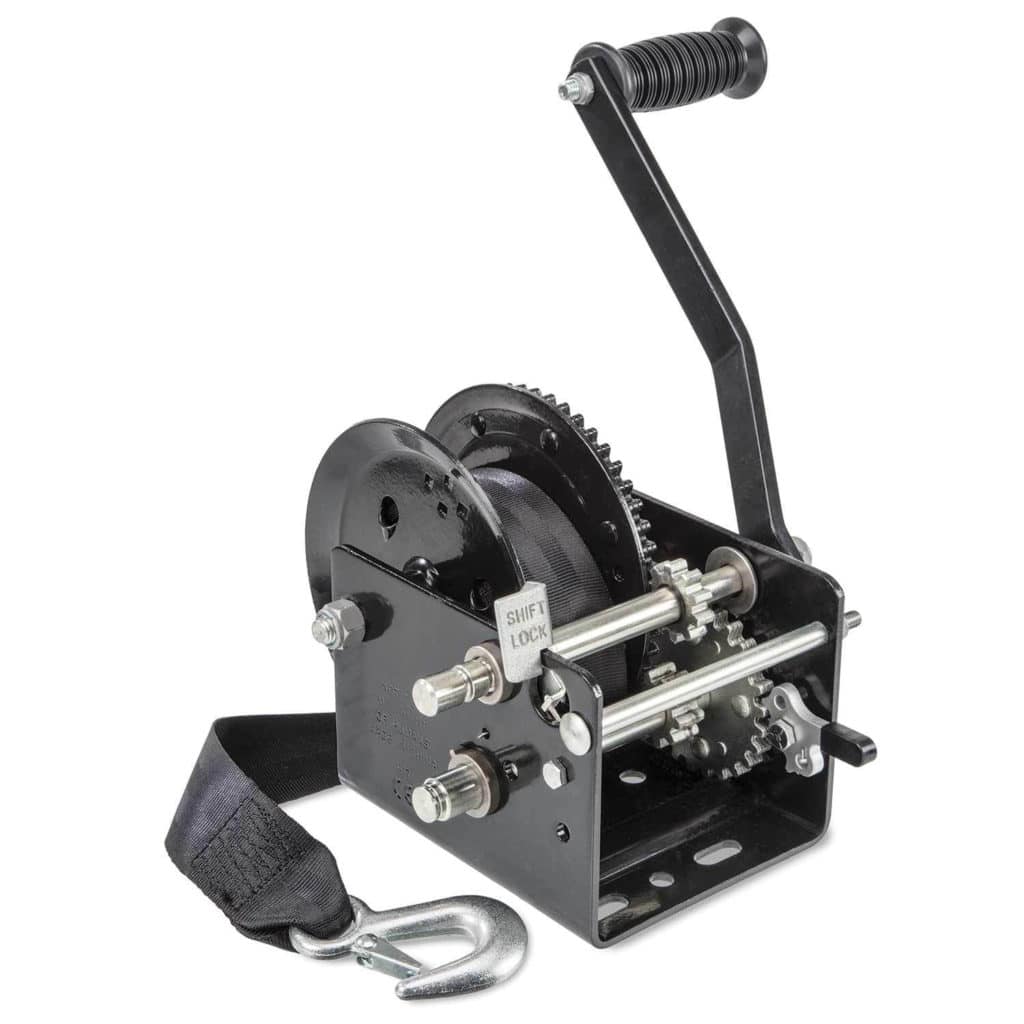
Winch
The winch, strap and hook can fail at the most inopportune time—usually when you’re retrieving your boat, with a line of boaters waiting to use the ramp. Like most of the other components, the winch fails due to neglect and misuse. Here are some tips to keep yours working:
- Keep the winch strap straight; don’t allow it to fold or crease, or flip over on itself when cranking.
- Keep the hook’s safety latch lubricated and working freely.
- Lubricate the gears, shafts and fasteners on the winch.
- Keep the winch’s handle nut tight; otherwise, it will loosen and round off the handle axle.
- Keep the winch’s attaching bolts tight to the trailer’s winch stand.
- Make sure the winch and bow stop are at the correct height for your boat’s bow eye. When winched up tight, the bow eye should end up just under the bow stop/roller.
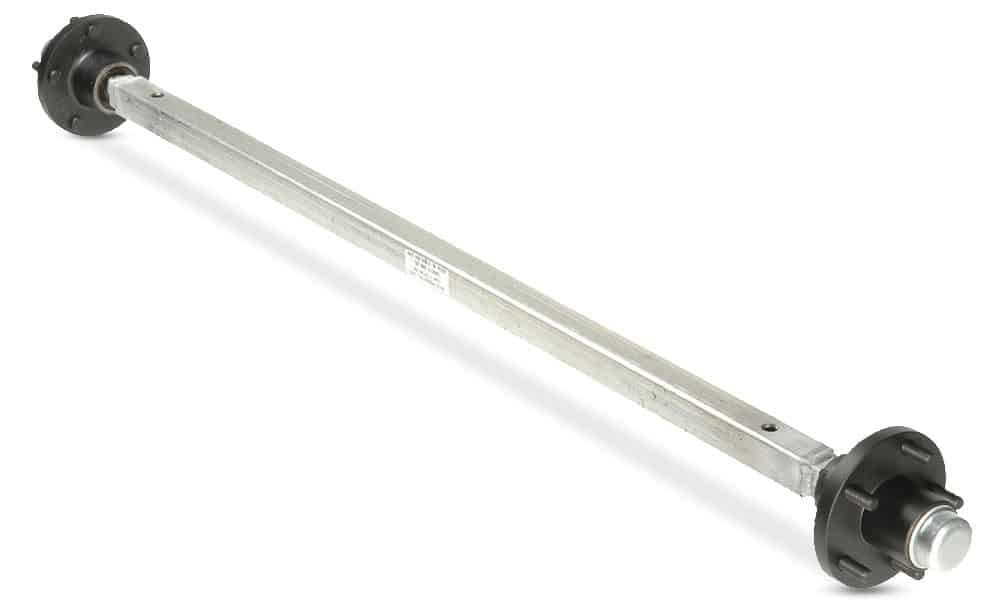
Axles
The backbone of your boat trailer, the axles see a load of abuse from corrosion, overloading and shock. Consider having yours checked at least once every couple of seasons by a professional trailer-repair shop. Unless you’re a seasoned trailer-repair expert, repairs to the axles, suspension and attaching hardware should be done by a pro. You can, however, check for excessive corrosion, axle sag, spring sag, and spring/attaching hardware corrosion. Check tires for strange wear patterns, and inspect the stance and levelness of the trailer from behind. This can reveal impending axle problems or even failure.

Frame
The frame is the bedrock of your trailer. While you can check for rust, sagging and broken welds, unless you’re a trailer expert with welding and frame-straightening experience, it’s best to leave major repairs to the trailer-shop experts. You can keep rust from spreading by touching up the finish with paint or cold-galvanizing spray. Check the frame for straightness and sagging with a visual check from the rear, and check tires for uneven wear. Inspect the welds and fasteners (for bolt-together trailers) at least once per season.
It’s easy to launch your boat and forget about the trailer until it reminds you it’s there—with a failure. Keeping things maintained is a pain, but much less painful than emergency repairs on the side of the road.
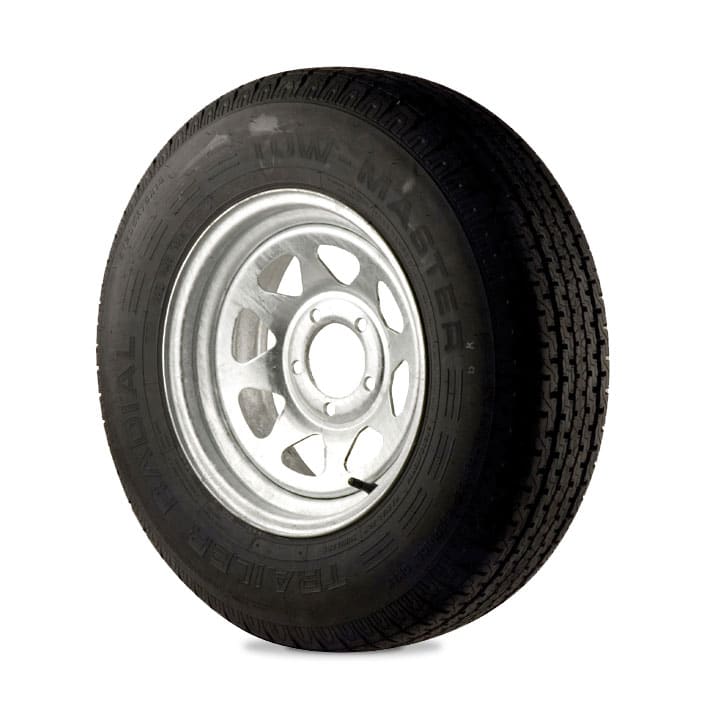
Wheels and Tires
The unsung heroes of the boat-trailer world, wheels and tires endure a lot of neglect. Often, failure comes not from mileage wear, but rotting due to age, idle sitting and ultraviolet rays. Want yours to last longer?
- Check often for signs of rot.
- Keep them inflated; don’t allow them to go flat.
- If you’re not going to use the trailer for a while, jack the frame up and keep the tires off the ground.
- Consider covering the tires to keep them out of the sun.
- Check the lug-nut torque at least once per season. When servicing, use Never-Seize on the wheel studs to keep the lug nuts from galling and seizing.
- Check wheels for straightness, especially if you’ve hit a curb lately.
- Make sure you have the correct wheel and tire sizes, and the load rating for the combined weight of the trailer and boat plus gear.

